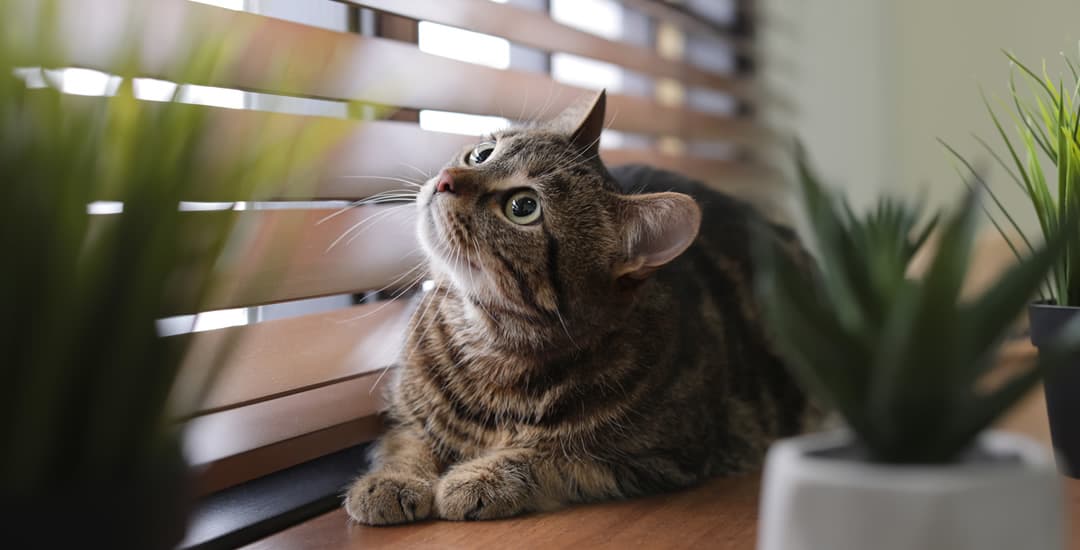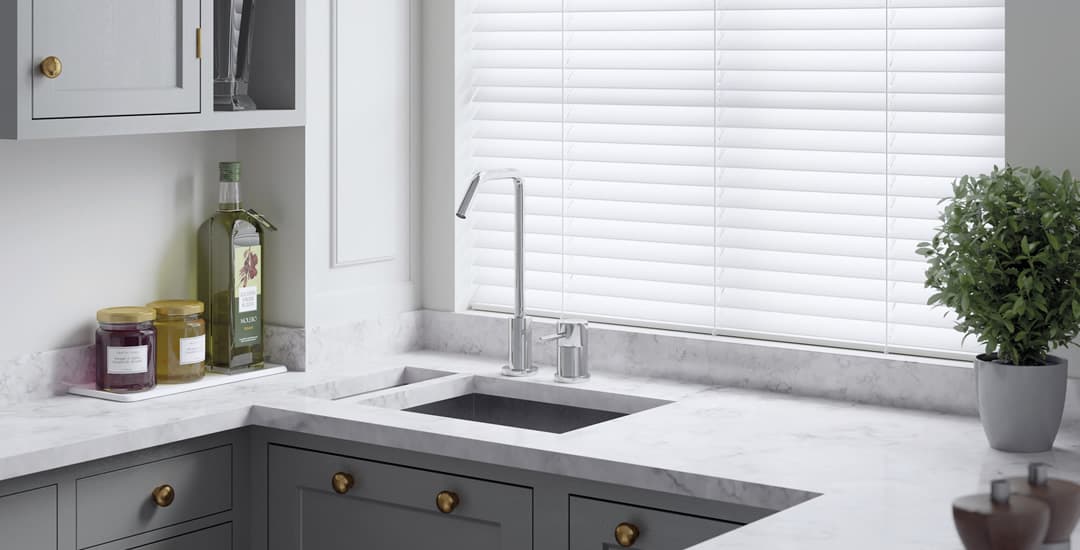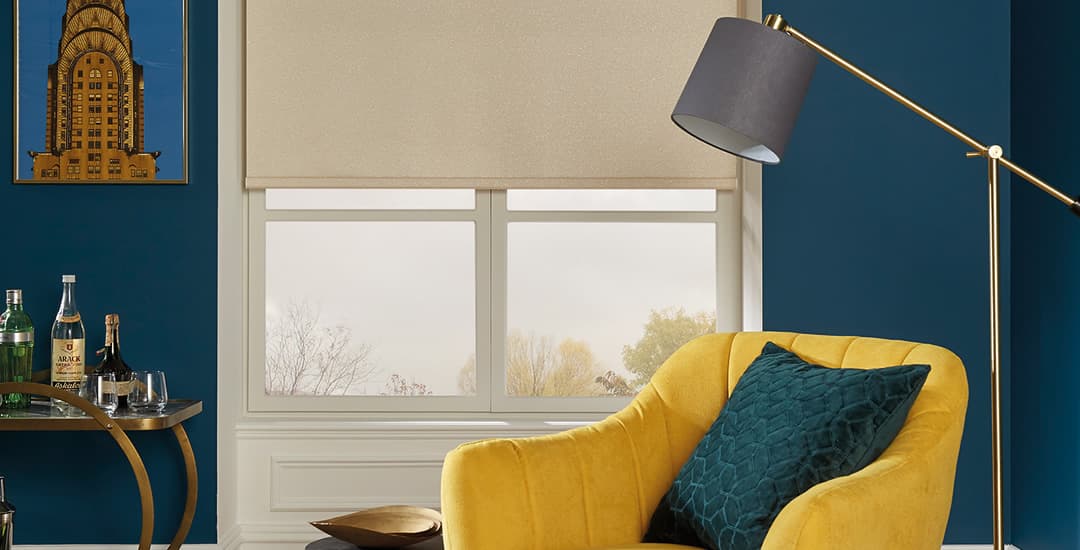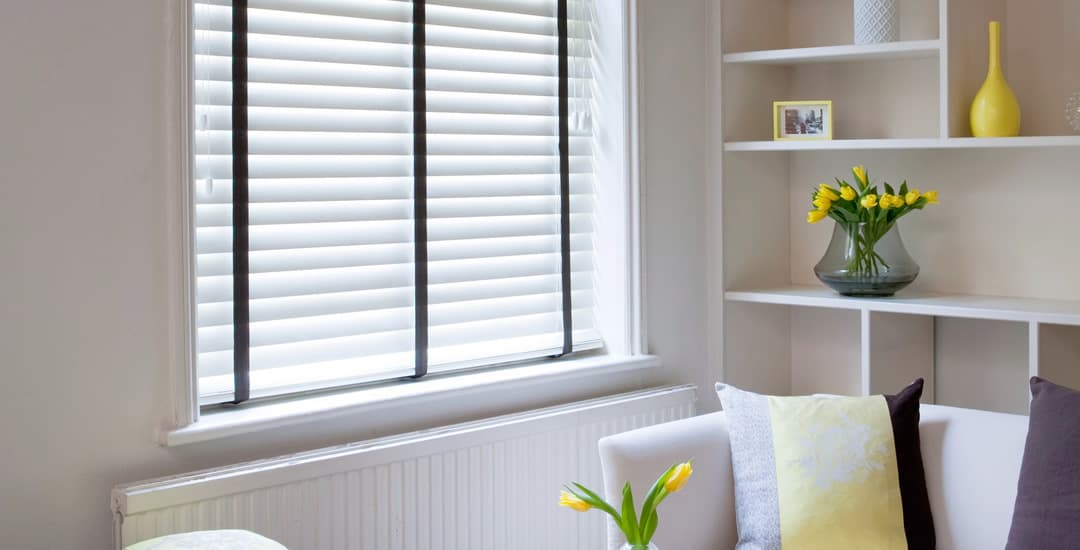
If you got here because you need to know what blinds do not break at the first sign of trouble, there’s a good chance that you have rowdy or not-always-super-trustworthy-when-your-back-is-turned kids, a dog that’s trying to chew his way straight to the vet for the third time this year, or a ninja cat.
As the owner of a cat who thinks that blinds, curtains, and in some cases, sheer walls are all for the climbing (guess I sort of asked for this by naming him Batman), this latter reason is particularly close to my own heart.
Other reasons to need blinds that won’t break easily might include having bought a suspiciously cheap lemon of a blind before, or having a partner who could break the screen of an LCD tv just by pressing the remote too hard, so powerful is their ability to destroy things.
Even if you’re a human adult grown up with the fine motor skills to match, blinds that reach all the way to the floor do in some contexts/conditions end up getting knocked about by feet and scuffed around too, even with the greatest of care taken; such as if they’re hung in a narrow-ish hallway.
Whatever led you here (and if your reasons are aren’t actually mentioned above, please do tell me in the comments) this blog post will tell you what blinds do not break easily, and why.
I’ll also provide a broad guide on the comparative costs of each type of blind I mention, as the cost to replace any given blind can be a factor in your choice too if you’re expecting trouble of the “lightsabre-wielding six-year-old who is also holding a drink” variety, or similar.
Which blinds don’t break easily?
To rank window blinds in order of the most resilient to the most puny, there are a few things to take into account. The first is that you need to use the right blind for the room in question; this largely means that for kitchens, bathrooms, or other rooms where humidity and potentially direct contact with water are going to be a factor, you need waterproof blinds.
If you don’t use the right blinds for the environment in question, this can and eventually might well cause them to break/fall apart of their own volition; and it will definitely speed along their demise if subject to one of the challenges I mentioned in the intro.
Also, some blinds will withstand some challenges better than others; for instance, if your kid is of the drink-throwing persuasion but has no interest in hitting things that are better left un-hit, you might want a different type of blind than you would for a child that doesn’t really work in the medium of liquids, but instead thinks that everything is a pinata.
If your cat climbs the curtains or is a gold medal hopeful in the claw-shredding Olympics, anything fabric-based is apt to turn into ribbons in short order, while a harder material might go completely unscathed.
This means that in some cases, I’ve got two blind types holding joint ranking in my list of what blinds do not break easily, for reasons that I will cover in the appropriate place.
Without further ado then, here’s my list of what blinds are the sturdiest and least likely to fold under interrogation.
What are the most hardwearing blinds overall? Faux-wood blinds

What blinds do not break under any but the most acute of pressures? Faux wood blinds.
Faux wood blinds are, in my opinion, the most hardwearing type of blinds of all, and the blinds most well-rounded in terms of being able to handle multiple different types of challenges. If you were looking for blinds for a children’s playroom and your talent pool of offspring contains a wide range of specialisms including a scribbler, a dinner smearer, a liquids-thrower, and a drummer, faux wood blinds are the way forward.
They’re made of really tough, hardwearing PVC, which is pretty thick as well as being waterproof and fire retardant. They don’t tend to be the type of blinds that cats would try to climb, and they don’t blow about in the breeze and so probably won’t cause your cat to try to rip them up.
They’re not made of real wood, so most* dogs that chew prolifically will probably prefer other furniture. (*Although there’s no accounting for terriers.)
Price-wise, faux-wood blinds fall around the middle of the list of blinds ranked from the most expensive to the cheapest, and they tend to have a long lifespan as well.
The second least likely to break blinds: PVC roller blinds
Roller blinds made of PVC specifically (rather than polyester) are waterproof, and unlikely to be climbed or clawed by cats as they’re sheer and smooth. Should your cat make it to the header rail itself by other means, this will hold the weight of more or less anything short of a lion, and maybe even one of those on a slim day.
They’re also very uncomplicated in design and can just be wiped clean; so liquids, food, fingerpaint and so on (more or less anything short of indelible pen, and if that’s what you’re dealing with, your blinds are likely to be a minor part of the total collateral damage incurred) will all wipe off with ease.
They’re also not the type of blinds kids tend to like to pull or rattle around, as they remain fairly innocuous due to just being a flat piece of fabric.
PVC roller blinds are also very economical to buy, and so it’s not as highly-loaded a gamble if you’re unsure and are considering taking your chances.
The third least likely to break blinds: Fabric roller blinds

Fabric roller blinds achieve all of the traits mentioned above, aside from those relating to water/liquid/being easy to clean. If your potential issues relate to problems of this nature, skip fabric roller blinds, but if you are expecting more of a bashing-related challenge than one involving liquids or food, fabric roller blinds are a good choice.
They’re also highly likely to be the lowest-cost type of blinds you can buy overall.
Joint fourth: PVC vertical blinds, and Venetian blinds
Here we diverge into the realms of having to factor in specific challenges being easier for certain types of blinds to weather than others, hence having two very different blinds in joint fourth place. My quick reasoning/round up is as follows:
PVC vertical blinds
These are waterproof and so good for liquid/food-related challenges. They’re also generally very robust in terms of the louvres themselves, and can withstand quite a sustained attack by most forms of child-appropriate projectiles and weaponry.
However, the bottom of the louvres contain weights, and the whole array is connected by a chain. This chain itself will last for anything up to a couple of decades if left to its own devices, but will tend to break at some point if children pull or kick it about with enough force.
Also, got a cat that does far more trouble making and far less sleeping than you were led to believe was the norm? Verticals probably aren’t for you.
Some cats see both the connecting chain and louvres swaying in the breeze as toys to grab and pull about, and Batman has just asked me to pass on for the benefit of any other cats reading this that the louvres are eminently climbable too.
PVC vertical blinds are also economical to buy, often around or not much more than the average cost of a roller blind.
Venetian blinds
Venetian blinds are slatted blinds made of lightweight aluminium, usually painted in a gloss finish. They’re waterproof and so won’t suffer from contact with liquids or food, and will usually clean up if crayoned on for this same reason. However, cleaning them is likely to be more time consuming and fiddly than cleaning up a waterproof roller blind, thanks to their rows of narrow slats.
Upside: Cats won’t pay Venetians any attention at all, generally. There may be the odd cat (but don’t worry, I already have that one) that will think the noise the slats make in the breeze is worthy of sticking his head through them to see what’s occurring, but this is pretty uncommon and unlikely to cause harm.
Downside: The aluminium slats are light and flexible, and if your potential challenge involves children beating at them or pulling them about, over time this is apt to make the slats bend, buckle, get dented, and cause the paint to chip or flake.
To buy, Venetian blinds aren’t overly pricey; they generally cost more than roller or vertical blinds, but less than other types of blinds.
The fifth hardiest type of blind: Wooden blinds

Wooden blinds are made of real wood, which is a large part of why they fall towards the lower end of my list of what blinds do not break with ease.
Real wooden blinds aren’t waterproof, and will potentially warp and stain over time from contact with liquids. This also means they’re likely to get marks on them that you can’t remove fully or effectively if scribbled on.
They’re not flimsy per se, and if, for instance, a child battered the blind about with their bare hands, even in quite a committed manner, this is unlikely to do them harm. Start factoring in tools though, and the odds of your blinds living long enough to see their nemesis head off to college drops exponentially.
Dog-wise, if your dog is a chewer and your blinds will be within their reach, wooden blinds are their most likely victims.
Cat-wise, real wood blinds are a totally safe choice as far as I have determined. And yes, I do have at least one of almost every type of blind we sell somewhere in my house; “mis-matched free stuff” is a style aesthetic all of its own, and nobody is going to tell me different.
Another reason to possibly avoid wooden blinds if damage is on your mind is that they fall towards the higher end of the price scale.
Last place, a.k.a. “blinds not to buy if you’re expecting trouble:” Roman blinds and Day and Night blinds
Got a kid? Got a cat that likes climbing the heck out of stuff? Roman blinds and Day and Night blinds respectively are not for you.
Roman blinds
Roman blinds first of all; reliably polled year-on-year as the type of blinds that cats find the most rewarding to climb and so, shred. They will also get furred up over time if your cat has a lot of contact with them, and Roman blinds need dry cleaning, which won’t even then necessarily remove their new cat fur weave feature if it has really become ingrained.
Roman blinds are not waterproof either, taking most things child-related off the table (and if the table was bare in the first instance, you’d probably not be having problems…) They will stain, mark, and get damaged in short order if they’re got wet, smeared in spaghetti hoops, or grasped at by gummy hands.
Roman blind fabrics often have intricate patterns and designs, and are made of fine, luxurious materials, so being pulled about or beaten at is out as well.
Also, Roman blinds are at the top of the tree of “most expensive blinds to buy,” so better left for domiciles occupied by genteel folk over the age of 18 (25 for men).
Day and night blinds
Day and night blinds are a type of roller blind, but they are made of two types of fabric and one of them is very fine and sheer. Often, it has a discernible meshy-looking pattern to it too, which will not last five minutes under the claws of a cat. It also means that anything too bash-y or poke-y will probably cause this part of the fabric to snag or rip without too much trouble. Oh, and they’re not waterproof either.
As is the case with Romans, day and night blinds are quite spendy too.
OMG, what happened to your blinds, hun?

If you’ve already gone through one or more sets of blinds due to damage or misuse before deciding that finding out what blinds do not break is probably a good idea before buying more, I would honestly love to hear what happened…. Please tell me in the comments!




